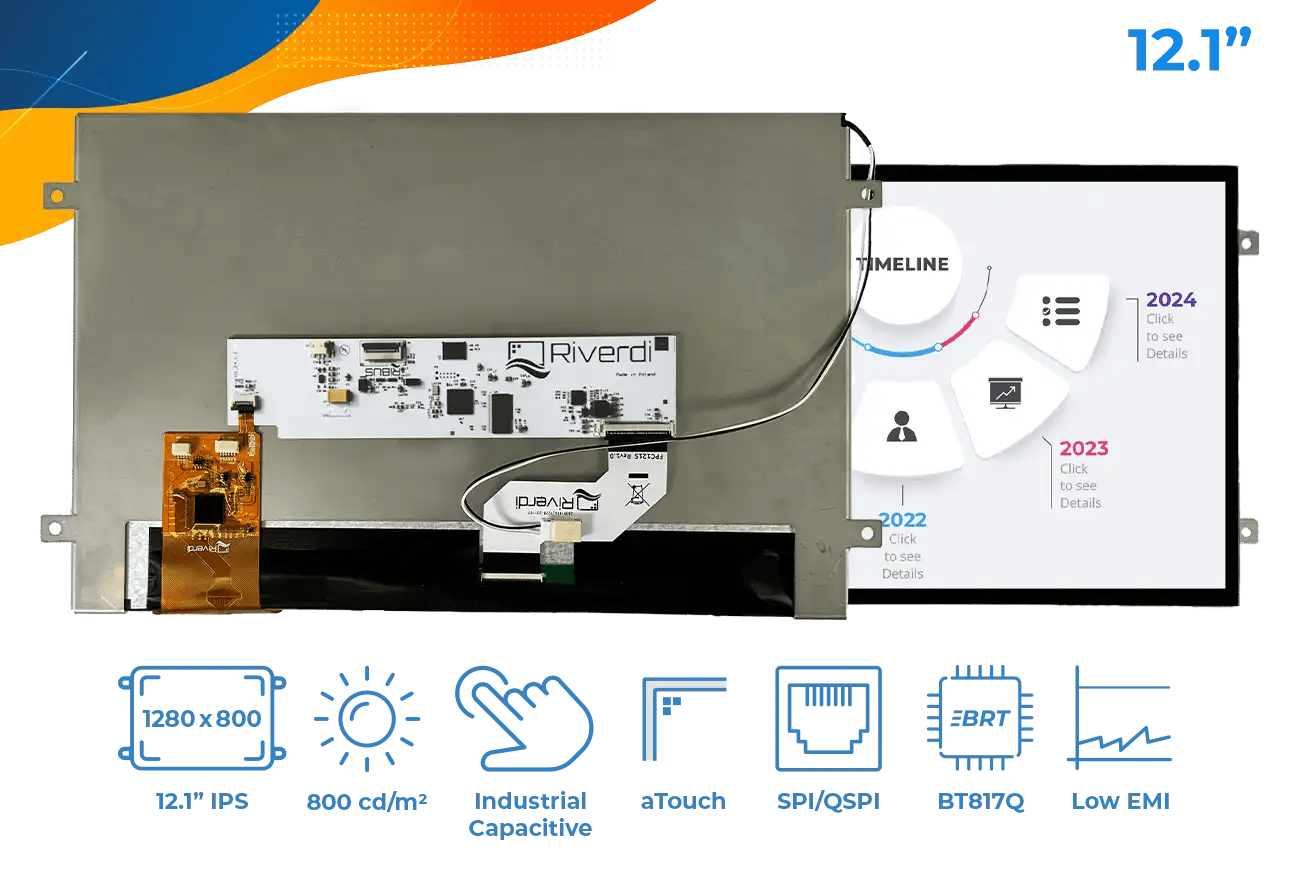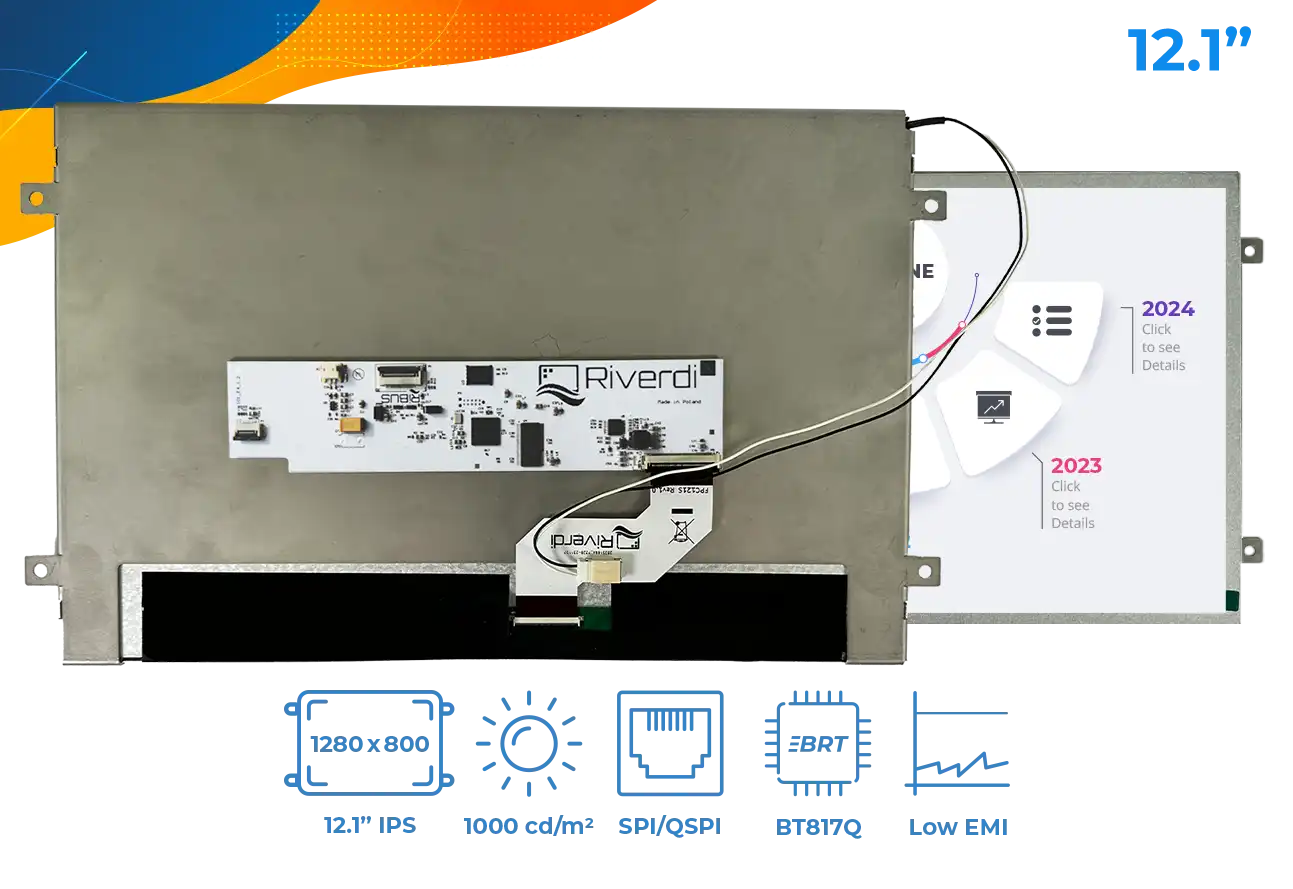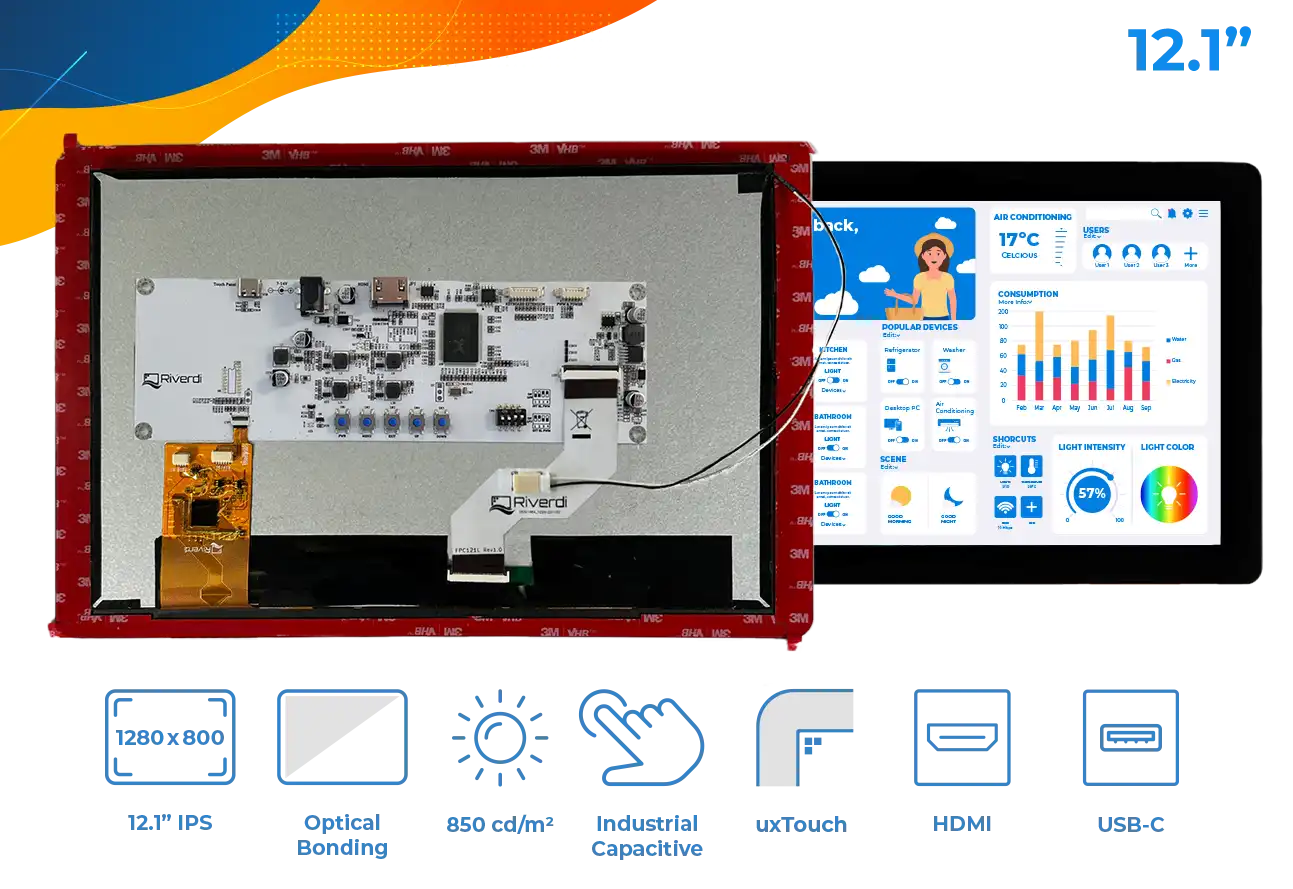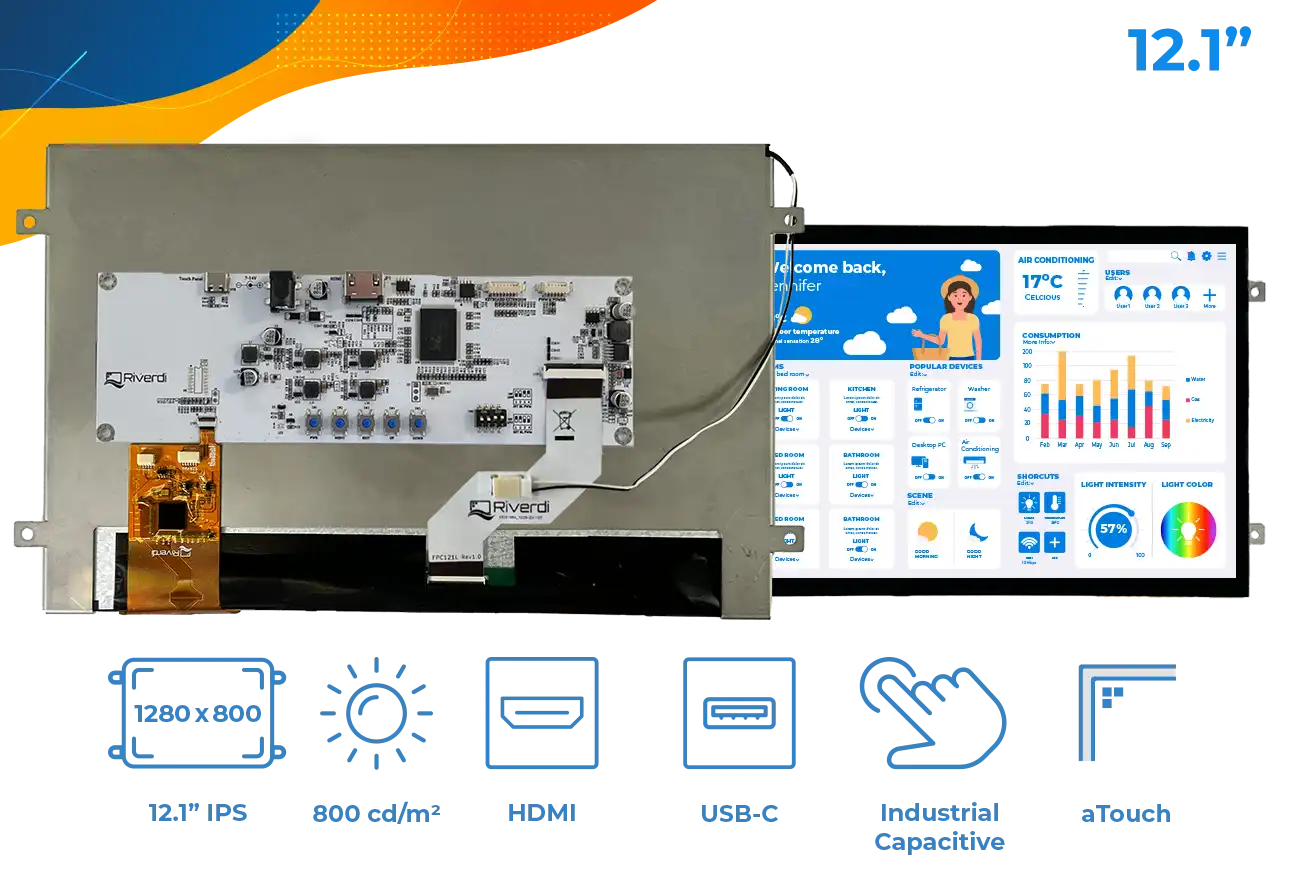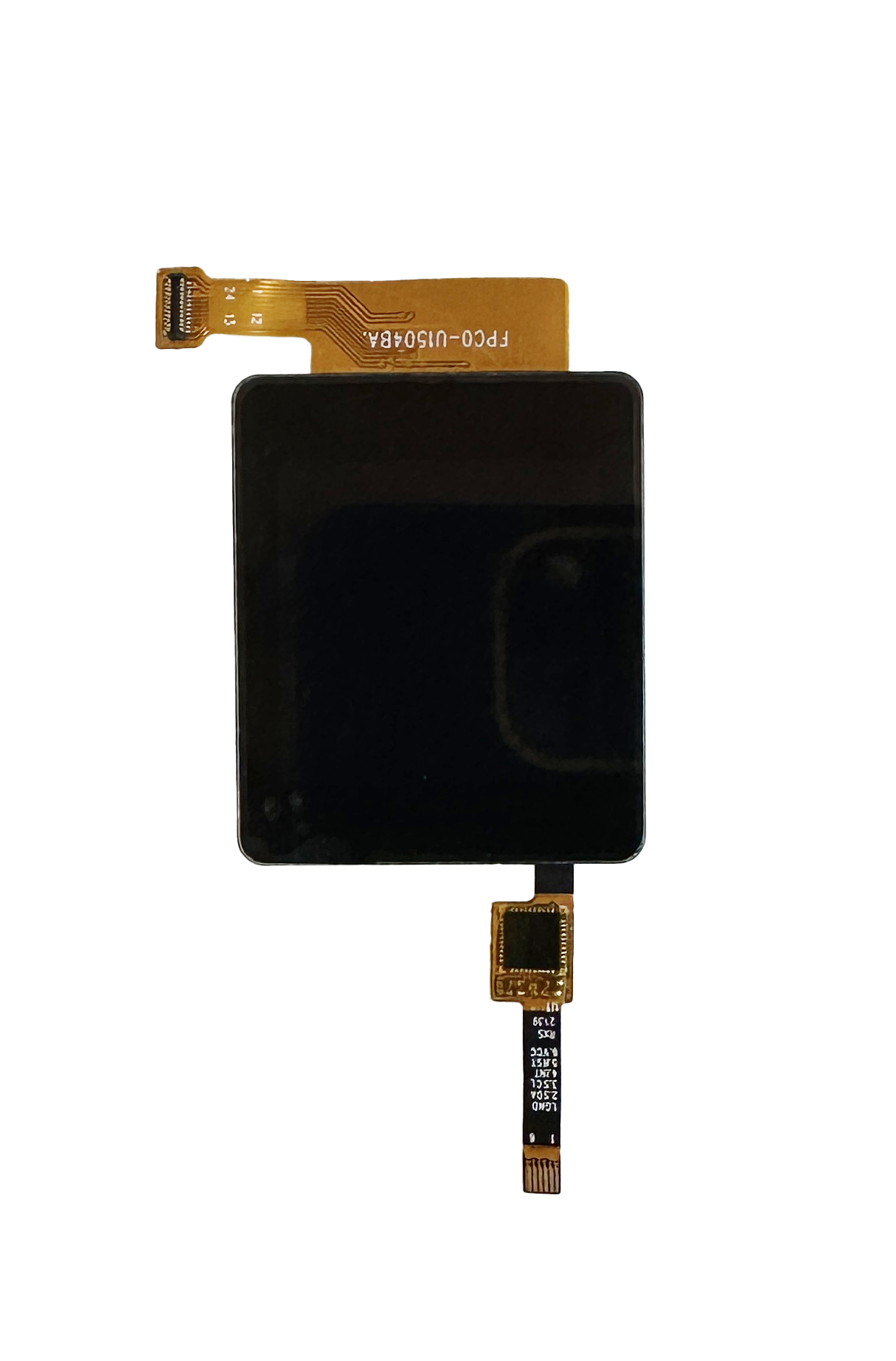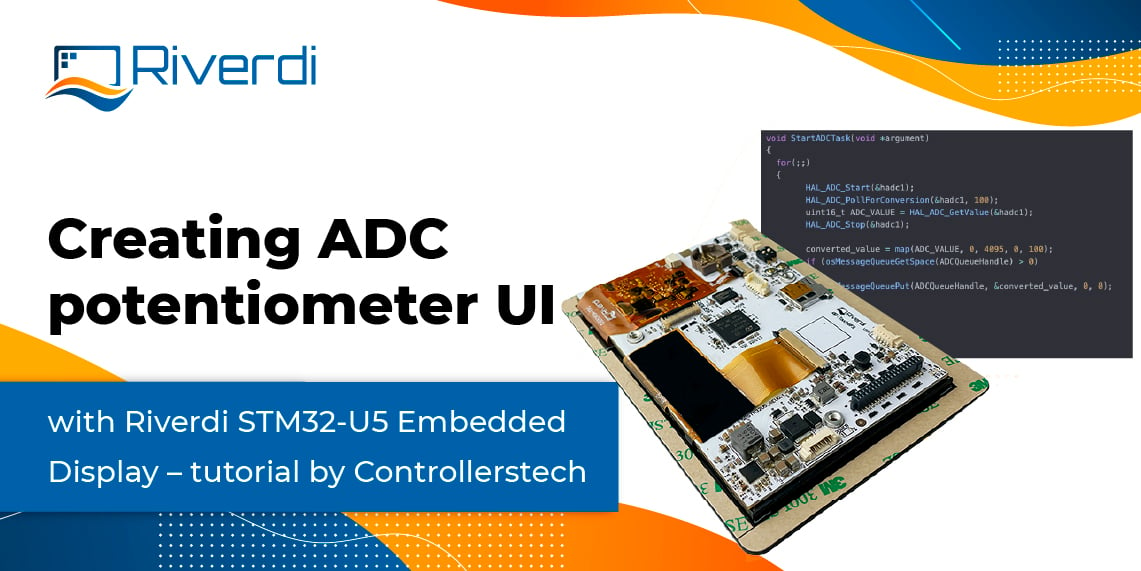With the fourth generation of the popular EVE display modules on the market, we thought that it was the right time to make a comparison between all the latest versions. We wanted to give you all the necessary information so that you know precisely which EVE module you need, the next time you’re browsing our shop.
But first of all, what does exactly EVE mean?
EVE is short for Embedded Video Engine, and the term was created by Bridgetek, for one of the lines of their graphics controllers. This particular line was designed for creating high-quality Human Machine Interfaces (HMIs).
Introducing EVE4
Before diving into the comparison of different EVE modules, it’s exciting to introduce the groundbreaking Riverdi EVE4 technology and products, taking embedded video engines to an entirely new level. Building on the legacy of Bridgetek’s EVE3, the EVE4, powered by the advanced BT817Q Bridgetek graphic controller, offers a revolution in the way we understand device displays. With the convenience of an on-board graphic controller, EVE4 modules enable seamless control of high-resolution, touchscreen displays via simple SPI or QSPI interfaces. This innovative technology allows an 8-bit microcontroller to generate striking graphics and movies, making complex systems and large memory pools a thing of the past. Furthermore, these displays incorporate flash memory to simplify live content management. Designed for both compatibility and flexibility, EVE4 technology fits flawlessly into your existing systems, and with its robust build, it’s suitable for a wide range of applications including medical, industrial, and military sectors. Indeed, the advent of EVE4 technology marks a turning point in intelligent display solutions, ushering in an era where display limitations are but a distant memory.
Read more on the EVE4 features and advantages and get to know how to upgrade to EVE4 and create GUI!
What are the main benefits?
- Save processing resources, like memory and bandwidth.
- Spend less time and costs on programming.
- Create high-quality Human Machine Interfaces (HMIs).
- Set up and run your display with ease.
- Boost the overall cost-efficiency of the device.
FTDI and Bridgetek – from FT80x to BT81x
As you probably already know, FTDI is famous for its USB technologies. But after launching the EVE series of graphics processors and getting so much success out of it, they have decided to move the EVE series and Generic Purpose processors under the Bridgetek brand. So that is the whole explanation of why the suffix changed from FT to BT.
Bridgetek’s EVE technology was developed for graphics and video applications, and it blends three great functionalities – audio, display, and touch. One of the major advantages of this line of graphics controllers is low power consumption, and support for LCD display’s SVGA, WQVGA, and QCGA.
| EVE 4 – BT817Q | Legacy – FT810/FT811 | Legacy – FT812/FT813 | Legacy – BT815/BT816 | |
| Target Riverdi Display Resolution | EVE4 series: 1280 x 800 – WXGA | Customized solutions: HVGA, VGA, WVGA, SVGA | EVE2 series: 5.0″ – WVGA 7.0″ – WVGA | EVE3 series: 3.5″ – QVGA 4.3″ – HVGA 5.0″- WVGA 7.0″- WVGA |
| RGB interface | 24 bits (RGB888) | 18 bits (RGB666) | 24 bits (RGB88)I | 24 bits (RGB888) |
| Touch function | Capacitive | FT810 – Resistive FT811 – Capacitive | FT812 – Resistive FT813 – Capacitive | BT816 – Resistive BT815 – Capacitive |
| Control interface | SPI/QSPI | SPI/QSPI | SPI/QSPI | SPI/QSPI |
| Object memory size | 1MB | 1MB | 1MB | 1MB |
| External memory support | Yes (512Mb) | No | No | Yes (64Mb) |
| 90° screen rotation | Yes | Yes | Yes | Yes |
| Image decoder | BMP, DXT1, Hardware JPG, ASTC | BMP, DXT1, Hardware JPG | BMP, DXT1, Hardware JPG | BMP, DXT1, Hardware JPG, ASTC |
| Video playback | Yes | Yes | Yes | Yes |
| GPIO | 5 | 2 | 4 | 4 |
| Package | QFN64 | QFN48 | QFN56 | QFN64 |
| Riverdi displays integrating this processor | link | link | link | link |
As you can see from the table above, the major new functionality of the EVE3 and EVE4 IC is the support for external memory and ASTC. The presence of the Adaptive Scalable Compression (ASTC) algorithm allows keeping the high image quality with major savings in memory space. The audio has also been improved – the analog output has changed for the digital one.
Thanks to the flash host port, the chip memory can be used for asset storage, which frees up the SPI bandwidth – so, this is what speeds up the communication. By default, the external memory on the EVE4 modules has up to 512Mb, but if your application requires more than that, feel free to contact us and we’ll be happy to make a customizes solution for you. You can use our Customization form.
SUMMARY
Riverdi Intelligent Displays offer a smart solution for combining video processing with the display, resulting in the image being processed by the display itself, thanks to the Bridgetek EVE graphics controller. This innovative technology, designed specifically for graphics and video applications, harmoniously integrates audio, display, and touch functionalities. The main benefits include conserving processing resources like memory and bandwidth, reducing programming time and costs, enabling the creation of high-quality Human Machine Interfaces (HMIs), facilitating easy setup and operation of your display, and significantly boosting the overall cost-efficiency of your device. The latest EVE4 Intelligent Display series marries the market’s most potent graphics controller, BT817Q, with an industrial-grade touch panel, further elevating Riverdi Intelligent Displays’ offerings. If you’re currently using older generations of EVE FTDI/Bridgetek controllers, consider migrating to the latest EVE4 series – a high brightness IPS intelligent display series featuring the BT817Q graphics controller.
Of course, all the EVE display modules work perfectly as a development platform.




